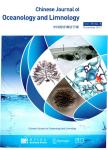Modern movement and deformation in the South China Sea shown by GPS measurements and numerical simulation
Modern movement and deformation in the South China Sea shown by GPS measurements and numerical simulation作者机构:Key Laboratory of Marine Geology and EnvironmentInstitute of OceanologyChinese Academy of Sciences Graduate University of Chinese Academy of Sciences Institute of Marine GeologyChina Geological Survey Editorial Office of Chinese Journal of Oceanology and LimnologyInstitute of OceanologyChinese Academy of Sciences
出 版 物:《Chinese Journal of Oceanology and Limnology》 (中国海洋湖沼学报(英文版))
年 卷 期:2013年第31卷第1期
页 面:159-168页
核心收录:
学科分类:0710[理学-生物学] 07[理学] 0908[农学-水产] 08[工学] 0707[理学-海洋科学] 0708[理学-地球物理学] 0804[工学-仪器科学与技术] 0815[工学-水利工程]
基 金:Supported by the National Basic Research Program of China (973 Program) (No. 2007cb411702)
主 题:中国南海 地壳变形 相对运动 数值模拟 GPS测量 调制解调器 大地测量数据 区域构造应力场
摘 要:To better understand the crustal deformation of the South China Sea Basin, we produce a mechanically consistent 2-dimensional model for observing regional velocity field in the South China Sea (SCS). We studied the dominating regional tectonic stress field by geodetic measurements and finite element analysis, the spatial variations of velocity field and strain field, and relative movements among different blocks, using a 2-dimensional model describing crustal deformation of the South China Sea Basin. Strain results show that the SCS is extending at present. The western part of SCS is opening gradually in NW- SE direction from its northern margin to the south, but the eastern part of SCS is opening gradually from its central part to the north and south. In addition, we analyzed the plate kinematics to the deformation of the SCS, using a two-dimensional finite element model. Our simulations results are well explained by available geodetic data. The movement of SCS is resulted from interactions among Indian Plate, Pacific Plate, Philippine Sea Plate, and Eurasian Plate.



